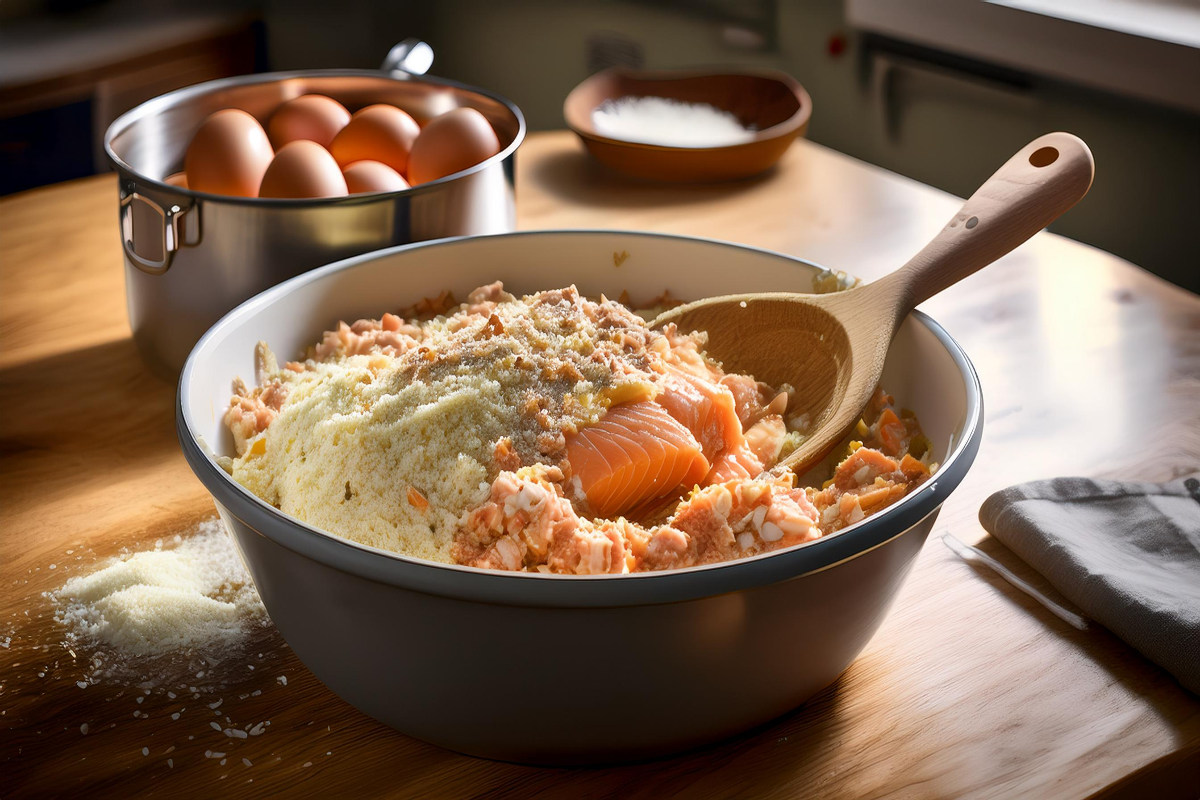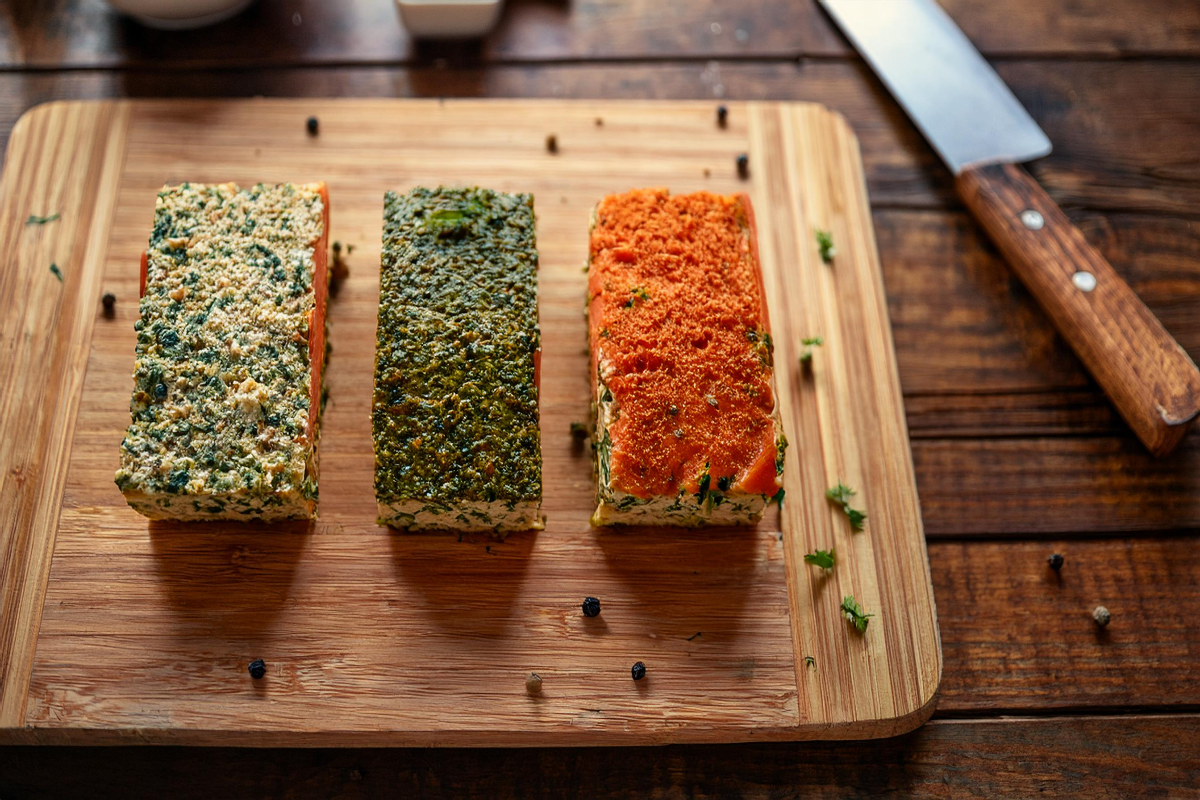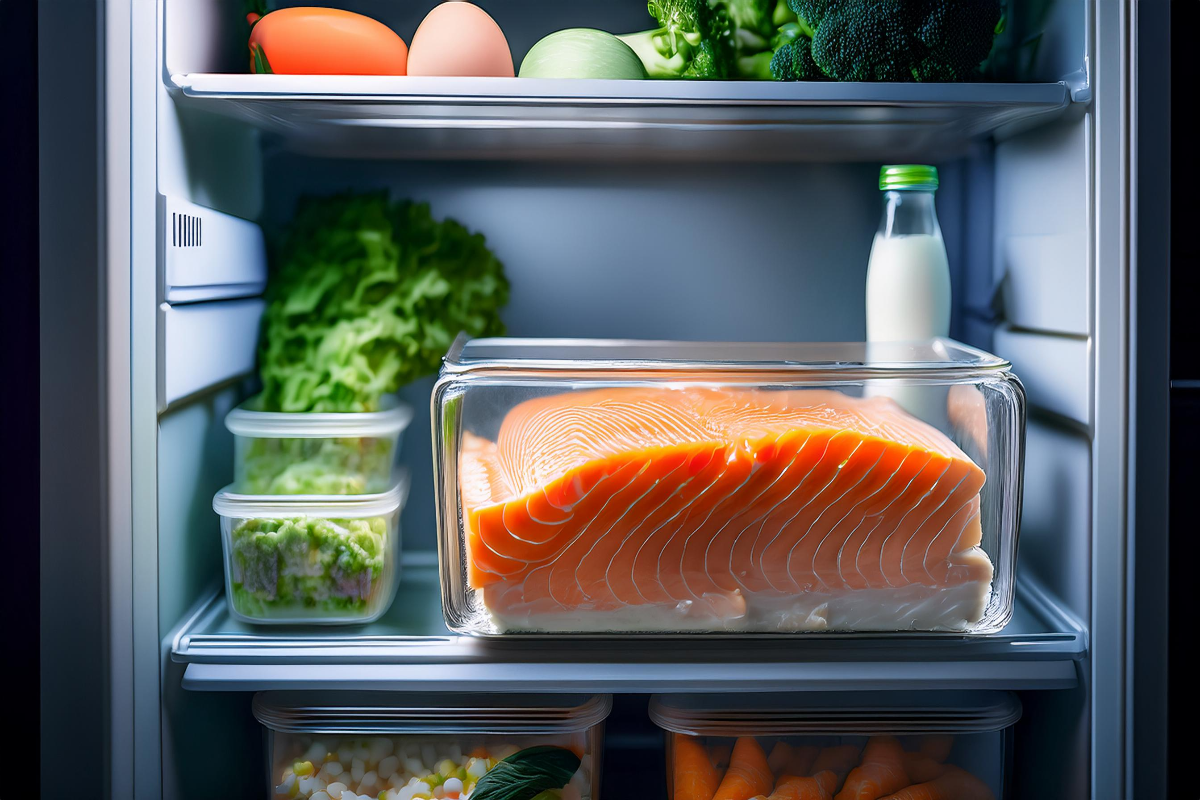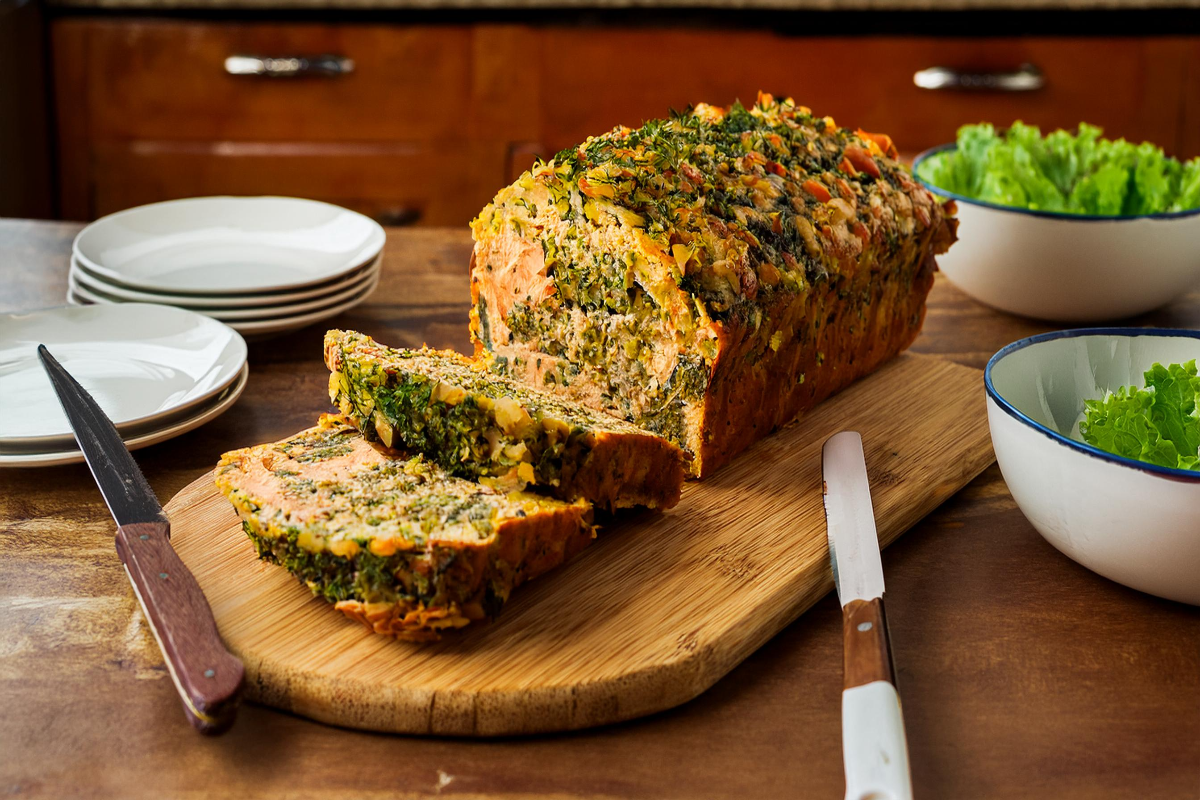If you’re looking for a hearty, protein-packed meal that’s both easy to make and highly nutritious, then this salmon loaf recipe is for you. Salmon is a versatile fish rich in omega-3 fatty acids, making it an excellent choice for health-conscious individuals. Whether you’re using fresh or canned salmon, this recipe is guaranteed to please your taste buds while providing essential nutrients. In fact, it’s a perfect balance between flavor and health. In this article, we’ll guide you through the steps to create the perfect salmon loaf and share several variations to suit different dietary preferences.
For another hearty meal option, you might also enjoy trying this goulash recipe, which is equally easy to make and customizable for any occasion.
Ingredients for the Perfect Salmon Loaf recipe

Before diving into the recipe, let’s look at the essential ingredients you’ll need to make a delicious salmon loaf:
- Salmon (canned or fresh)
- Eggs (for binding)
- Breadcrumbs (or gluten-free options)
- Milk
- Fresh herbs (parsley, dill)
- Lemon juice
- Onion, finely chopped
- Salt and pepper to taste
Having fresh, high-quality ingredients can make all the difference in flavor and texture. When possible, opt for wild-caught salmon for the best taste and nutritional value. If you’re interested in more protein-rich dishes, take a moment to check out these rotisserie chicken recipes for even more ideas on what to cook for dinner.
Preparation Time and Serving Size: Salmon Loaf Recipe
This salmon loaf recipe is a quick and easy meal to prepare. The entire process takes about 15 minutes to prepare, followed by 40-45 minutes of baking time. Thus, it’s the perfect dish to make on a busy weeknight. This recipe serves 4-6 people, depending on your portion sizes, making it ideal for family dinners or small gatherings.
Step-by-Step Instructions to Make the Perfect Salmon Loaf recipe

Step 1: Preheat Your Oven and Prepare the Loaf Pan
First, begin by preheating your oven to 350°F (175°C). While the oven heats, grease your loaf pan with a bit of butter or oil to prevent sticking, ensuring a perfect texture.
Step 2: Prepare the Salmon
Next, if you are using fresh salmon, be sure to remove any skin and bones. Flake the salmon into small pieces for a smoother loaf. For those using canned salmon, simply drain the liquid and flake it gently.
Step 3: Mix the Ingredients
In a large mixing bowl, combine the flaked salmon, breadcrumbs, eggs, milk, lemon juice, chopped onion, herbs, salt, and pepper. Mix until well combined but be careful not to overmix as it can affect the loaf’s texture, making it denser than desired.
Step 4: Form the Loaf
Now, place the mixture into the greased loaf pan, pressing it down gently to form a smooth, even top.
Step 5: Bake and Serve
Finally, bake the salmon loaf for 40-45 minutes, or until the top is golden brown and firm to the touch. Allow it to cool slightly before slicing and serving. Pro tip: Pair it with a squeeze of lemon or a dollop of tartar sauce for an extra burst of flavor.
For a different seafood twist, consider trying this smoked salmon recipe that uses smoked salmon instead of fresh or canned.
Common Variations of the Salmon Loaf Recipe

One of the best aspects of this salmon loaf recipe is its incredible versatility. Depending on your dietary needs or flavor preferences, here are some popular variations:
- Healthy Version: Add vegetables like spinach, zucchini, or carrots for extra nutrients and a heartier loaf.
- Gluten-Free: If you’re avoiding gluten, substitute traditional breadcrumbs with gluten-free breadcrumbs or almond flour.
- Keto-Friendly: Those following a low-carb diet can use almond flour or ground flaxseed instead of breadcrumbs to lower the carb content significantly.
- Spicy Twist: For a bit of heat, add a dash of cayenne pepper or your favorite hot sauce to the mix.
Each variation brings a unique flavor and texture to the dish, ensuring that there’s something for everyone.
Nutritional Information
A single serving of this salmon loaf provides approximately:
- 200-250 calories
- 20g protein
- 10g fat (mostly healthy omega-3 fats)
- 15g carbohydrates (depending on the type of breadcrumbs used)
This meal is not only tasty but also packed with nutrients, making it a perfect choice for anyone looking for a wholesome, well-balanced meal.
Serving Suggestions for Salmon Loaf recipe

Wondering what to serve with your salmon loaf? Here are some tried-and-true side dish ideas to round out the meal:
- Roasted vegetables (such as carrots or asparagus)
- Mashed potatoes
- A fresh garden salad
- Rice pilaf
For more inspiration, don’t miss out on this guide for creative side dishes to serve with salmon.
Storage and Reheating Tips
This salmon loaf can be stored in an airtight container in the fridge for up to 3 days, which makes it a great option for meal prepping. When reheating, use a low oven temperature or microwave on a lower setting to maintain its moist texture. If you plan to freeze leftovers, wrap individual slices tightly in plastic wrap before placing them in the freezer to ensure freshness.
For more tips on storing leftovers, take a look at how to keep rotisserie chicken fresh in the fridge, which also applies to your salmon loaf.
Frequently Asked Questions (FAQs)
Can I use fresh salmon instead of canned salmon?
Yes, you can use either fresh or canned salmon. Fresh salmon tends to offer a better texture, while canned salmon provides convenience and affordability, making it ideal for last-minute meals.
What can I use instead of breadcrumbs?
If you’re avoiding gluten or simply looking for a variation, you can substitute breadcrumbs with gluten-free options like almond flour or oats. For a low-carb variation, ground flaxseed works as an excellent alternative to breadcrumbs.
How do I know when the loaf is done?
The loaf is done when the top is golden brown, and the center is firm. You can also insert a toothpick into the middle; if it comes out clean, it’s ready to serve.
Can I freeze the salmon loaf?
Absolutely! The salmon loaf freezes well. Simply wrap it tightly in plastic wrap or aluminum foil, then store it in an airtight container. It will last in the freezer for up to 3 months, ensuring you always have a tasty meal on hand.
What herbs and seasonings work best for salmon loaf?
Popular herbs like parsley, dill, and thyme complement the flavor of salmon wonderfully. You can also experiment with garlic powder or paprika for added depth and richness.
Conclusion
This salmon loaf recipe is a wonderful way to enjoy the health benefits of salmon in a new and exciting form. It’s easy to make, adaptable to different dietary needs, and full of rich flavors. Whether you’re preparing a quick weeknight dinner or a more elaborate meal for a special occasion, this salmon loaf won’t disappoint. Feel free to experiment with variations, and don’t forget to serve it alongside your favorite sides!
For more tips on how to choose the best salmon, check out how to choose the best salmon for cooking.
A Versatile Recipe for Every Occasion
This salmon loaf recipe proves to be incredibly versatile, making it suitable for various occasions. Whether you’re planning a simple weeknight meal or hosting a dinner party, the recipe’s flexibility allows you to adapt it to different dietary needs and preferences. By adjusting the ingredients or incorporating additional flavors, you can create a dish that pleases everyone at the table. Its hearty texture and balanced flavors make it perfect as a standalone dish, but it also pairs well with a wide variety of sides. Experimenting with different serving ideas, like roasted vegetables or a crisp salad, further elevates the experience. For more ideas, check out Bon Appétit’s guide to side dishes.
Moreover, the recipe is forgiving and easy to follow, ensuring that both novice and experienced cooks can prepare it with ease. You can swap out ingredients like breadcrumbs for gluten-free alternatives or make a keto-friendly version by using almond flour. These simple adjustments not only make the dish healthier but also broaden its appeal to those with specific dietary restrictions. The salmon loaf is a great canvas for experimentation, whether you’re adding new herbs or spices or varying the texture with fresh vegetables. To discover more creative ways to modify your salmon dish, visit Serious Eats.
A Healthy and Nutrient-Dense Meal
Salmon is widely known for its rich omega-3 fatty acid content, making this loaf not only delicious but also highly nutritious. The recipe combines these healthy fats with protein-rich eggs, milk, and herbs, offering a well-rounded, nutrient-dense meal. Omega-3 fatty acids are essential for maintaining heart health, reducing inflammation, and supporting brain function, making this dish a smart choice for anyone looking to improve their diet. Plus, the dish’s balance of protein, healthy fats, and carbohydrates ensures it provides sustained energy, keeping you fuller for longer without the need for heavy, processed ingredients. For more information on the health benefits of salmon, refer to Healthline’s salmon nutrition article.
By opting for wild-caught salmon or even using fresh instead of canned, the nutritional benefits can be maximized. This not only enhances the flavor but also increases the levels of essential vitamins like vitamin D and B12. Including fresh herbs such as dill or parsley further boosts the nutritional profile by providing antioxidants and essential minerals. This makes the salmon loaf a satisfying, guilt-free meal you can feel good about serving to your family or guests.
Perfect for Meal Prep and Leftovers
One of the best aspects of this salmon loaf recipe is how well it lends itself to meal prep and leftovers. The loaf can be made ahead of time and stored in the refrigerator for several days, making it ideal for busy schedules. It’s also a great option for those who like to prepare meals in bulk and reheat throughout the week. The loaf maintains its flavor and moisture when reheated, especially when using a low oven temperature or microwave. This makes it convenient for quick lunches or dinners, saving time without sacrificing taste or quality.
Additionally, the salmon loaf freezes exceptionally well, so you can easily portion it out and store it for up to three months. Simply wrap individual slices in plastic wrap or aluminum foil before freezing, and you’ll have a ready-made meal available whenever you need it. Whether you’re looking to make healthy lunches for work or simply have a nutritious option on hand, this dish’s ability to store and freeze well makes it a practical and valuable addition to your recipe rotation.
